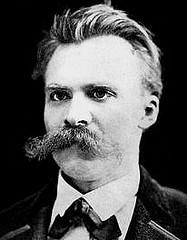Middle Worlds: The Validity Of “The Birth Of Tragedy And Philosophy Spirituality “
 Julio Fernandez Nietzsche begins his book The Birth of Tragedy (1872) establishing a responsibility on the world of dreams. the dream is the true subject of art: its capacity predictor (as symbolic analogom) makes art a paradigm of life, a life that only art is possible and worth living p. 43. Although it will be in its posthumous On the truth and falsehood in the sense extramoral (1873), where Nietzsche inquire about metaphor and on the ability of images to form the essence of reality, already in The Birth of Tragedy we can see a clear critical position with regard to harmony, as appropriate, understandable and logical features that hitherto were the cultural basis of what was art. By an exercise in allegory, and through the analysis of Greek tragedy, Nietzsche we will be taking to the field of semiotics in order to investigate the essence of things, the importance of the symbol in its original state, which is below, her being, her silent and invisible violence will say almost a century later Foucault in The Order of Things -. It is relevant that Nietzsche attributed to a character in Greek tragedy as a mediator between the divine and human is beyond conscious understanding and willingness to own apprehension. This “middle world”-which in origin was represented by the chorus-dithyramb satirical to the sublime shapes and save the art of its inherent absurdity. Just as Wagner, Nietzsche art to plague him all and all, because the sap is the same way that waters Dionysian life.
Julio Fernandez Nietzsche begins his book The Birth of Tragedy (1872) establishing a responsibility on the world of dreams. the dream is the true subject of art: its capacity predictor (as symbolic analogom) makes art a paradigm of life, a life that only art is possible and worth living p. 43. Although it will be in its posthumous On the truth and falsehood in the sense extramoral (1873), where Nietzsche inquire about metaphor and on the ability of images to form the essence of reality, already in The Birth of Tragedy we can see a clear critical position with regard to harmony, as appropriate, understandable and logical features that hitherto were the cultural basis of what was art. By an exercise in allegory, and through the analysis of Greek tragedy, Nietzsche we will be taking to the field of semiotics in order to investigate the essence of things, the importance of the symbol in its original state, which is below, her being, her silent and invisible violence will say almost a century later Foucault in The Order of Things -. It is relevant that Nietzsche attributed to a character in Greek tragedy as a mediator between the divine and human is beyond conscious understanding and willingness to own apprehension. This “middle world”-which in origin was represented by the chorus-dithyramb satirical to the sublime shapes and save the art of its inherent absurdity. Just as Wagner, Nietzsche art to plague him all and all, because the sap is the same way that waters Dionysian life.
